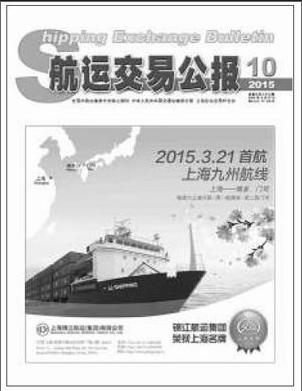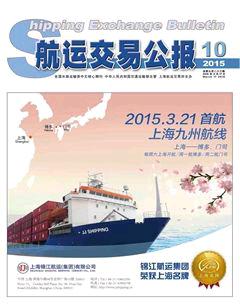Weekly Commentary on China Containerized Transportation
Liu+Zijia

In the week ending March.6, China export box market is on the recovery period after the Chinese New Year, hitting freight rates in many services, with comprehensive index declining. On March 6, China (Export) Containerized Freight Index (CCFI) issued by Shanghai Shipping Exchange (SSE) quotes 1064.23 points, down by 1.1% from one week ago; while Shanghai (Export) Containerized Freight Index (SCFI) issued by SSE quotes 960.29 points, falling by 6.1% from last week.
In the European service, cargo volume performs unsatisfactory, and transport demand is weak to improve. Most box liners enforce freight rate reduce measures, with the lowest even below USD700 per TEU. On March 6, freight rate in the services from Shanghai to European and Mediterranean (covering seaborne surcharges) quote USD816 per TEU and USD1134 per TEU, diving 13.0% and 10.9% from one week ago respectively.
In the North America service, cargo volume increases slightly after the Chinese New Year, plus box liners carrying out capacity limit measures, the demand/supply condition is nice. On March 6, freight rate in the services from China to USWC and USEC (covering seaborne surcharges) quote USD1921 per FEU and USD4740 per FEU, down by 4.4% and 4.2% against last week respectively.
Considering that cargo volume in the North America service tends to be stable, part of box liners plan to implement the first round of freight increase plan after Chinese New Year in mid March, with extent around USD600 per FEU.
In the Persian Gulf/Red Sea service, transport demand has no increase, plus part of box liners increasing capacity supply, the oversupply of capacity is remarkable, leading to the loading rate in some services below 60%, and spot rate falling further. On March 6, freight index in the China-Persian Gulf service quotes 990.18 points, having a week-on-week slip of 2.6%.
The Australia service sees that most box liners reinforce the capacity limit measures by AADA members, but owing to the weak transport demand for a long time, the unbalanced demand/supply condition deteriorates. Competition between spot rates gets more stiffened, with some even not more than USD500 per TEU. On March 6, freight rate in the Shanghai-Australia service (covering seaborne surcharges) quotes USD586 per TEU, diving by 11.5% against one week ago.
In the South America service, the whole market is stable. In the east coast of this service, most box liners strengthen to control capacity, with the average slot utilization rate rebounding to be around 80%, and spot rate stable; while in the South coast of this service, cargo volume improves better, plus the limit increase of capacity, the average slot utilization rate in some services rises to be 90% about, with spot rate unchanged. On March 6, freight index in the China-South America service quotes 811.58 points, almost unchanged from last week. It is said that part of box liners announces to hike freight rate with the extent between USD300-USD600 per TEU.
Cargo volume in the Japan service rebounds somehow, but impacted by the increase of vessel spaces, the average slot utilization rate still below 50%, with spot rate falling slightly. On March 6, freight index in the China-Japan service quotes 694.92 points, having a week on week decrease of 2.7%.
(Please contact the Information Dept of SSE for more details.)
SHIPPING EXCHANGE
BULLETIN
TOTAL EDITION: 923
17/3/2015CONTENT FOR THIS WEEK
?Japan Shipbuilding Enters High-End Ships Market
?Japan Shipyards Is Seeking for Help
?Shagang Shipping Is Hit by Clear
?Four Potential Troubles for the Tanker Integration
?Nanjing Port Explores New Mode for Development
?The Key Words on Shipping Declared on the “Two
Sessions” This Yearendprint

